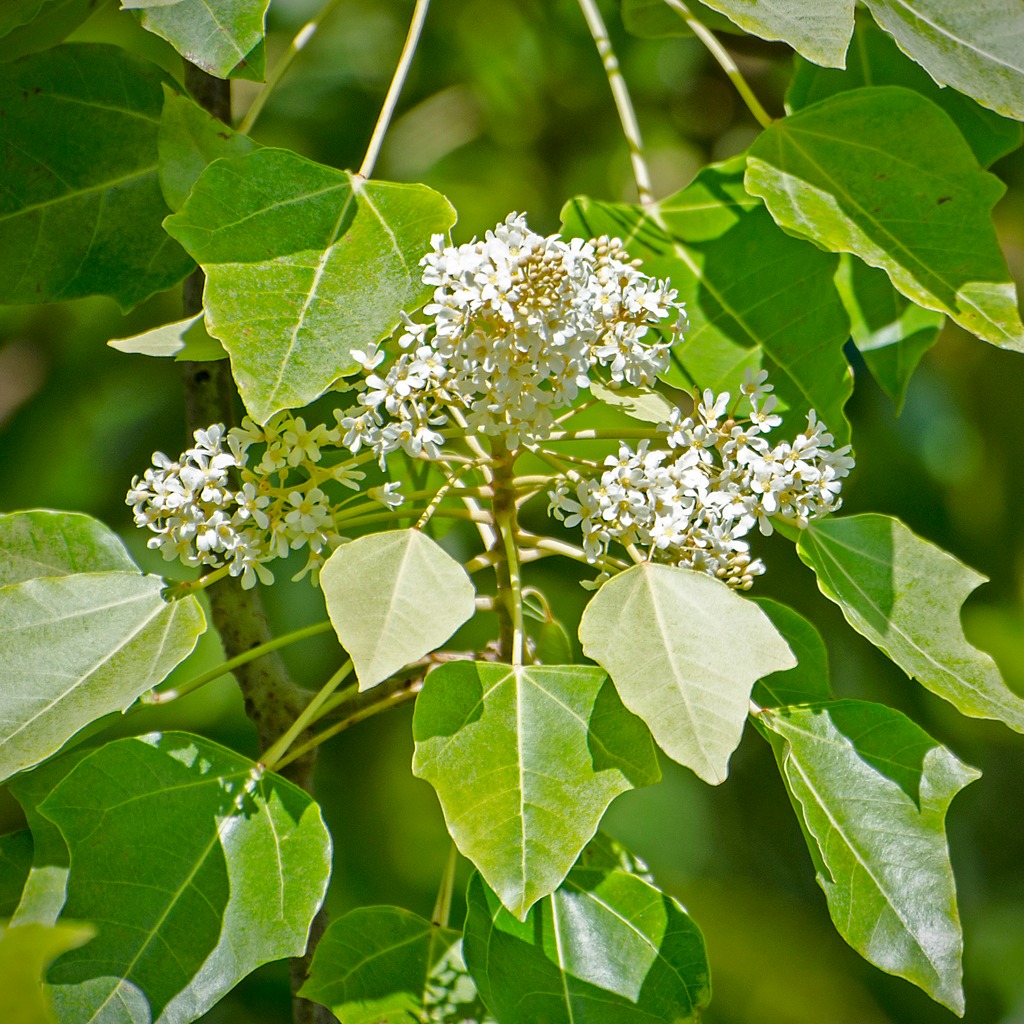Candlenut
(Aleurites Moluccana)

Description
Aleurites moluccanus, the candlenut, is a flowering tree in the spurge family, Euphorbiaceae, also known as candleberry, Indian walnut, kemiri, varnish tree, nuez de la India, buah keras, godou, kukui nut tree, and rata kekuna. The candlenut grows to a height of up to 30 m (98 ft), with wide spreading or pendulous branches. The leaves are pale green, simple, and ovate or heart-shaped on mature shoots, but may be three-, five-, or seven-lobed on saplings. They are up to 20 cm (7.9 in) long and 13 cm (5.1 in) wide and young leaves are densely clothed in rusty or cream stellate hairs. Petioles measure up to 12.5 cm (4.9 in) long and stipules about 5 mm (0.20 in). Flowers are small—male flowers measure around 5 mm (0.20 in) in diameter, female flowers about 9 mm (0.35 in). The fruit is a drupe about 4–6 cm (1.6–2.4 in) in diameter with one or two lobes; each lobe has a single soft, white, oily, kernel contained within a hard shell which is about 2 cm (0.79 in) in diameter. The kernel is the source of Candlenut oil. This plant was first described by Carl Linnaeus in his work Species Plantarum (Sp. Pl. 2: 1006 (1753)) in 1753 as Jatropha moluccana. It was renamed as Aleurites moluccana in 1805 by Carl Ludwig Willdenow in a later edition of Species Plantarum (Sp. Pl. 4: 590 (1805)), but has since been renamed as Aleurites moluccanus. Its native range is impossible to establish precisely because of early spread by humans, and the tree is now distributed throughout the New and Old World tropics. The candlenut was first domesticated on the islands of Southeast Asia. Remains of harvested candlenuts have been recovered from archaeological sites in Timor and Morotai in eastern Indonesia, dated to around 13,000 and 11,000 BP, respectively. Archaeological evidence of candlenut cultivation is also found in Neolithic sites of the Toalean culture in southern Sulawesi dated to around 3,700 to 2,300 BP. Candlenuts were widely introduced into the Pacific islands by early Austronesian voyagers and became naturalized to high volcanic islands. A. moluccanus grows in tropical rainforests and gallery forests. It is a very fast-growing tree and often appears in disturbed rainforest. In Australia the altitudinal range is from sea level to 800 m (2,600 ft).
Taxonomic tree:







